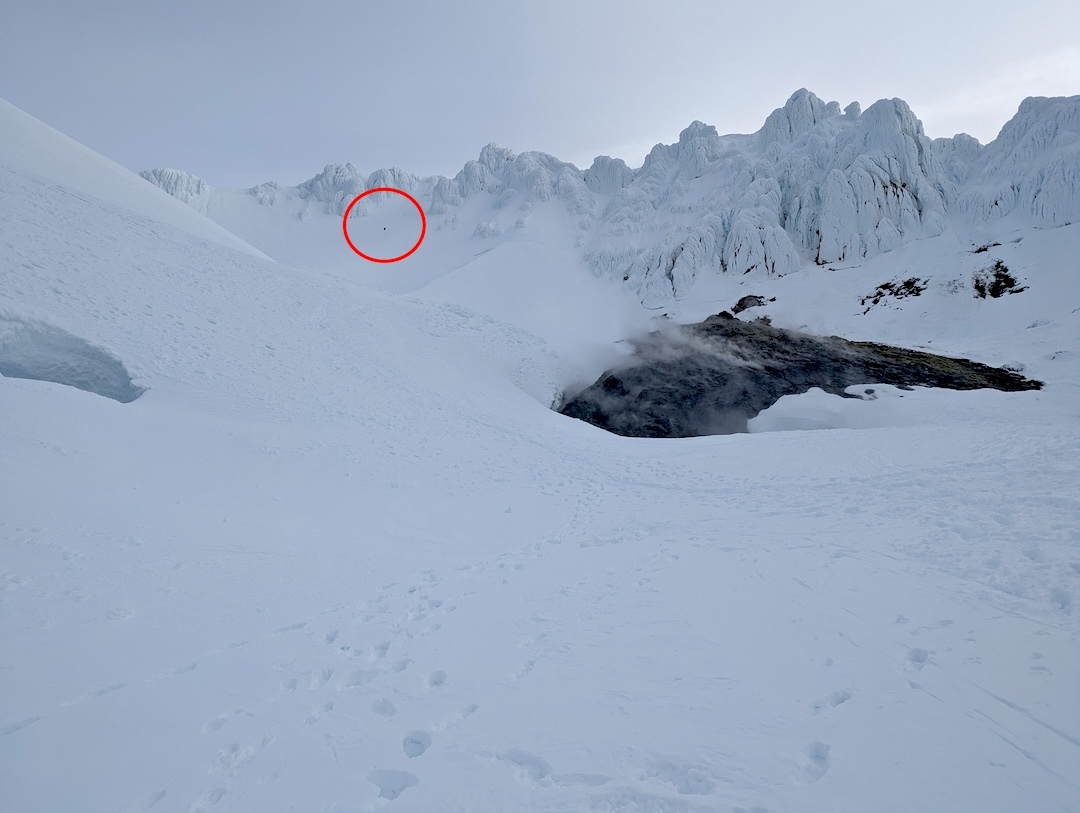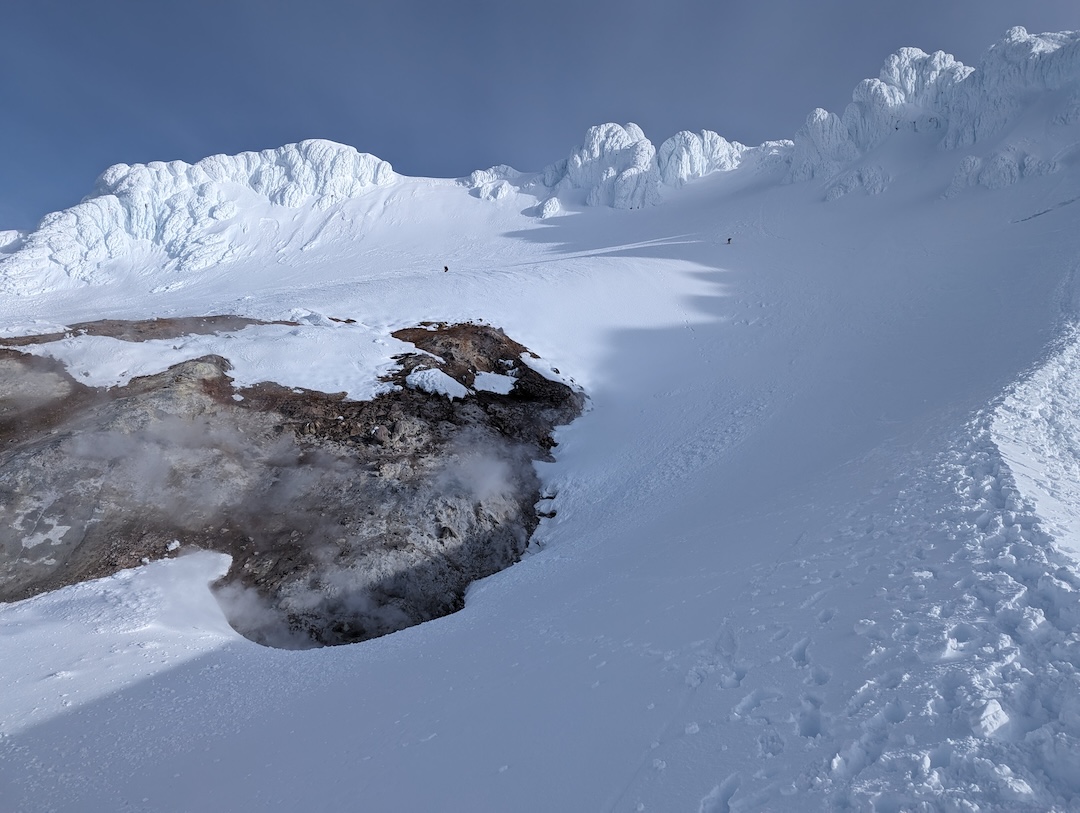Fall on Snow — Fumarole
Oregon, Mt. Hood, South Side

On April 11, I (Ben Sleister) and my climbing partner were ascending the standard south-side route on Mt. Hood. There were at least three parties ahead of us. We had climbed/skied to the Devil’s Kitchen area by around 7 a.m. The conditions were springlike after several days of warming and freeze-thaw. It was about 32°F, avalanche danger was low, and the weather clear. We both put on harnesses as a rescue precaution. I also carried a 30-meter rope for the same reason.
We continued up at the same time as another party of two. Shortly after, I saw a climber falling down a steep section above, cartwheeling head over heels. The four of us had a brief discussion and I climbed up the slope toward the fallen climber. I arrived three to five minutes later.
The climber was standing on rock in the gap between a fumarole and the snowy rim. He had no apparent way out. I descended toward him, but when I got within 30 feet, the instability of the snow made me cautious. The climber was alert but could not get out of the pit. His face and jacket were covered with blood. He complained of finger and hand pain but no other injuries.
I attempted to place a picket but the snow was like ball bearings. My partner and I sat down and dug in with crampons to form an anchor. I lowered my rope to the climber with an ice axe attached. With the assistance of the rope, the stranded climber crawled and climbed out of the pit.
Another party above us had descended and they helped us get the injured climber to a safer location. (One of the rescuers departed after complaining of shortness of breath from the sulfur fumes emanating from the fumarole.) We assessed the climber and found no injuries besides a bleeding nose and finger pain. He was wearing a helmet, was 18 years old, and said that his dad was still at the top. We gave him some extra layers, water, and sugar and waited for his father. We discussed calling for a rescue but did not feel the injury warranted air evacuation. It took the climber’s father 60 to 90 minutes to descend. By this time the fallen climber was feeling better and elected to descend with his father. We advised they visit a medical facility to assess for head trauma.
ANALYSIS
Deceptive conditions on the south side of Mt. Hood and a reputation as an “easy” route contributed to this accident. While Mt. Hood carries a stigma against roping up, the consequences of a fall can be fatal. The fallen climber was lucky to have survived—I estimate he had fallen over 1,000 feet. (Source: Ben Sleister.)


